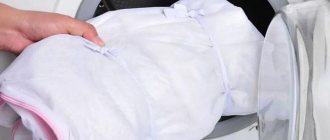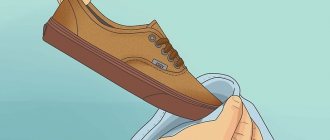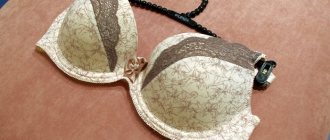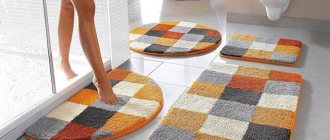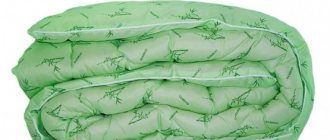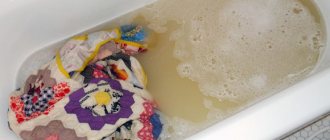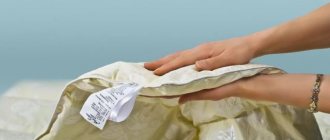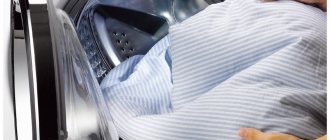Window decoration is considered an important element of the interior. Curtains and tulles are a connecting element between various decors, imbuing the room with an aesthetic atmosphere.
Nylon tulle
The following types of fabrics are used for curtains:
- curtains;
- tulle.
Thick long curtains are sewn from curtains, and tulle is used as an integral part of the overall textile composition or as an independent decorative element - it depends on the style of decorating the room.
Features of bleaching depending on the material
Achieving the ideal washing result - snow-white tulle - is possible only if the detergent and cleaning method are correctly selected for each type of fabric.
From nylon
Any detergents and folk remedies can quickly return nylon to its freshness and snow-white appearance. Only powders containing chlorine and bleaching components are prohibited .
A nylon curtain can be washed faster if it is pre-soaked in salted water.
From organza
Light, delicate organza is best washed by hand using liquid detergent. Under no circumstances should organza be rubbed, twisted, or stretched too much .
The water temperature for washing is not higher than 30C. Boiling organza and using chemical bleaches is strictly prohibited.
Laundry soap will help quickly whiten organza curtains, and rinsing in water with the addition of ammonia or hydrogen peroxide will consolidate the positive results of washing.
From the veil
The light, airy veil is washed only in cool water (temperature no higher than 40C), without using any aggressive detergents.
How to bleach tulle with salt?
How to bleach tulle with salt?
As mentioned above, salt perfectly bleaches fabric from any stains.
Important: Use only rock salt with large crystals. Fine purified and iodized salt is not suitable for this.
How to bleach tulle with salt? To bleach heavily yellowed old tulle curtains, you need to use a concentrated salt solution:
Recipe: Wash the fabric and rinse until clean. Dissolve 1 glass of table salt in 3 liters of warm water. Fill the curtain with this solution. From time to time, “stir” the tulle in the water so that it is completely saturated with the solution. Leave it overnight and wash the fabric in the washing machine in the morning.
By bleaching an old tulle curtain in this way, you will see how the bright whiteness has returned to the canvas. She will be beautiful and snow-white.
Another effective method of bleaching tulle using salt:
Recipe: Mix 3 tablespoons of salt with 1 tablespoon of laundry detergent. Fill the mixture with water (30*C) and leave the tulle in the solution overnight. In the morning, rinse the curtain in cool water and hang to dry.
How to bleach correctly at home
Any product must first be tested for effectiveness. The same test allows you to assess the degree of negative impact of the substance used on the material. Instructions for carrying it out:
- Determine the area of the product that is least visible. For example, the substance can be applied to the seam area from the wrong side. It is recommended to test nylon along the edge.
- Apply the minimum amount of product that you plan to use. The reaction to contact with the substance manifests itself quickly. Sometimes the result of the effect on the fabric can be seen after some time (depending on the composition and properties of the material). You need to wait from 5 minutes to half an hour. If the appearance of the curtain in the treated area has not changed, you can begin the bleaching procedure.
When performing such a test, you need to remember that the application of the chemical must be carried out in the concentration that is recommended in the recipe.
If you use a diluted or, conversely, potent composition, the result will be unpredictable. During bleaching, the curtain will lose its properties; it can no longer be hung on the window in this form.
There are 2 types of funds used:
- folk recipes;
- chemical substances.
Homemade compositions differ from special bleaches in their operating principle and properties. Advantages:
- folk remedies affect the material more gently and do not contribute to the destruction of fabric fibers;
- no pungent odor or volatile substances;
- low cost;
- ease of procedure and availability of components.
Home remedies have one, but significant, drawback - the average level of effectiveness. The yellowness may remain, but will only become paler.
But this shortcoming manifests itself when not all folk recipes are used. Additionally, they note that home remedies sometimes have to be left on the fabric for a long time to lighten the curtain.
Special bleaches also have positive qualities:
- performance;
- high efficiency;
- low consumption due to high concentration of the substance.
Disadvantages of chemical bleaches:
- aggressive effect on tissue;
- rapid deterioration in the appearance of curtains;
- persistent chemical smell.
Folk remedies
If the curtain has turned yellow, any of the following compositions will make it snow-white:
- Saline solution. Prepare 2 tbsp. l. salt, 1 liter of water. In order for the solid fractions to dissolve faster, take a warm liquid (temperature no more than +40°C). Powder intended for delicate washing is introduced. Its quantity is taken taking into account the manufacturer's recommendations. The prepared solution is used to bleach nylon curtains, but first they must be completely soaked in the product. After 2 hours, start washing. A concentrated solution effectively removes old yellowness: 1 kg of salt per 5-6 liters of liquid.
- Ammonia. Prepare 7 liters of homemade bleach. To this amount of water you need to add 1 tbsp. l. ammonia and 2 tbsp. l. hydrogen peroxide. The duration of the soaking procedure is no more than 40 minutes, but can be reduced to 20 minutes. After this, it is recommended to rinse the curtain.
- Soda based solution. This product equally effectively eliminates yellow and gray shades of the material. You need to prepare 1 bucket of water. Add 2 tbsp to the filled container. l. soda, 100 g washing powder. The product is used to soak tulle curtains.
- Brilliant green solution. Use a minimum amount of product - 12 drops, diluted in water (250 ml). Separately, dissolve salt (2 tablespoons) in 1 liter of liquid. Then the contents of the containers are mixed. It is important to wait 2 minutes before pouring the brilliant green solution into the saline solution. This will allow the smallest fractions to dissolve. As a result, there will be no dark spots left on the curtains. There is no need to soak nylon in the bleaching composition. The product is rinsed in it 3-4 times.
- Soap. Laundry detergent is most effective. It is crushed (100 g) and dissolved in 1 liter of water. The liquid becomes thicker. In accordance with the recommendations, stir washing powder (150 g) in water (the volume can be found on the label of the selected product). Then these solutions are mixed and the nylon is soaked. The duration of the procedure is no more than 90 minutes.
- Boric acid. You will need the substance in an amount of 50 g. It is added to 5 liters of water. The drug is poorly soluble in liquid. For this reason, it is better to introduce it into warm water. The duration of the soaking procedure is 3 hours.
- Potassium permanganate. Prepare a pale pink solution. Moreover, first you need to add a small amount of potassium permanganate fractions to 1 tbsp. water. Then the solution is gradually introduced into a larger volume of liquid until it turns pale pink. To increase efficiency, you can use laundry soap (add shavings to the prepared solution).
- Acetylsalicylic acid. Take no more than 4 tablets. They need to be dissolved in water (5 liters for the specified amount of the drug). In this case, you cannot use effervescent Aspirin. This product contains additives, which can cause deterioration of the nylon condition.
Household chemicals
The principle of bleaching is the same as in the case of folk recipes: the tulle is soaked in the composition, then rinsed and washed or immediately hung to dry. Available household chemicals:
- Amway (Premium Series). You will need 40 g of this product. To remove yellowness, it is recommended to first remove dirt on the curtain during washing. Then mix bleach and washing powder, respectively: 40 and 20 g.
- Domestos - quickly removes dirt of various types, but the product may lose its attractiveness in a short period. “Domestos” is a chlorine-containing product. The main component in the composition promotes the destruction of fabric fibers. In addition, the tulle will soon lose its whiteness. Nylon turns yellow under the influence of chlorine.
- Vanish is an oxygen bleach. The product acts on nylon less aggressively than chlorine. It is used to remove contaminants from materials of various compositions and properties, including synthetics. The disadvantage of this product is that it gradually reduces the effectiveness of the whitening procedure.
- Ace is another type of chlorine product. It works the same way as Domestos.
- Dr. Beckmann. This product is designed specifically for curtains. It can be used to restore the properties of synthetic and natural fabrics. This product copes with the yellow tint and gray color on nylon. It is also used to remove the smell of nicotine from things. Bleach comes in powder form. 1 package is enough for 2 washes.
General information
Some people don't want to bleach fabric because they think the process takes a long time. In fact, the entire process will only take about 20 minutes. When choosing more complex bleaching methods, the tulle will have to be soaked overnight. Store-bought whitening products do an excellent job, but they cannot be used often. Due to the presence of aggressive components in their composition, the material loses its wear resistance. The best way to whiten nylon tulle is to use homemade cleaning products.
How and how to bleach tulle from gray?
The grayish tint of tulle appears after frequent washing. How and how to bleach tulle from gray? Use these tools:
Baking soda. Dilute 1 tablespoon of soda and the same amount of washing powder in 5 liters of warm water. Soak the fabric in this solution for 2-3 hours. After this, wash the tulle and rinse well.
Potassium permanganate. Add a few drops of potassium permanganate to a bucket of hot water (temperature no more than 40*C). Pre-dissolve the manganese crystals in water to create a saturated solution (the color of thick red wine) - this will help you quickly obtain a solution of the desired color. Pour 2-3 tablespoons of washing powder into the prepared soft pink water. Wash the fabric in this solution, rinse in cool water and hang on the curtain to straighten the fabric.
Zelenka. The tulle must first be washed in powder and rinsed. Dissolve 10-15 drops of brilliant green in a glass of water and stir. Pour this solution into a bowl of water and rinse the fabric, let the water drain and hang to dry.
Zelenka for bleaching tulle
A very effective bleaching agent that our grandmothers used - starch and laundry soap:
- Grate ordinary laundry soap, place it in a pan of water and put it on gas.
- While the water and soap are on the gas, prepare the starch: dissolve 250 grams of potato starch in 5 liters of water
- When the water starts to boil, stir the soap bars and immediately remove the pan from the stove
- Pour this solution into a large bowl of cold water and soak the tulle in it for 5 hours
- After the time has passed, rinse the fabric until clean with water and soak in a starch solution for 5-10 minutes.
- Lightly wring out the tulle and hang it on a rope to drain the water. After this, you can hang it on a curtain to smooth it out and dry it further.
Important: You can use both hand washing and an automatic machine to bleach tulle. There is no need to iron the tulle after the process; hang it wet, but let the water drain. This will help achieve a long-term effect - the tulle will be snow-white, the fabric will not stretch and will smooth out well.
Machine washable bleaching
There is an opinion among many housewives that tulle cannot be washed and bleached in an automatic machine, since the fabric is too delicate. In old machines it was really impossible to wash thin materials; they could become hopelessly damaged, even torn. A modern automatic machine is multifunctional: it will remove all dirt, bleach, and preserve the integrity of the fabric fibers.
How to wash white tulle in order to bleach it in a washing machine, and the curtain will shine clean again? Manufacturers of automatic machines have different programs for gentle washing, but each of them has a mode that will carefully wash and whiten thin tulle:
- silk;
- wool;
- for delicate linen;
- delicate;
- handwash.
Each of these programs is suitable for the finest tulle.
The temperature (not higher than 30°C) is set automatically, except for hand wash mode.
Note to housewives: how to wash tulle so that it is snow-white
Light, translucent, airy curtains on the windows help create a special atmosphere of home comfort and tranquility.
But, unfortunately, initially snow-white tulle under the influence of bright sunlight and dust takes on the gray, worn look of an old thing.
Some tips and recommendations will help restore the original whiteness and refresh the tulle.
We will tell you in the article how to wash tulle so that it is snow-white, and how to get rid of gray and yellow tint at home.
What to do with very yellowed tulle?
Severely faded curtains are difficult to tidy up using one of the methods listed above. In this case, an integrated approach is needed:
- First of all, wash the product in the machine with added powder.
- Then boil the curtains in a strong solution of laundry soap for an hour.
- Afterwards, soak the tulle in a solution of hydrogen peroxide and ammonia.
- Rinse in saline solution.
- Secure the effect by rinsing in a starch solution. For information on how to prepare this in a suitable concentration, see the publication “Starching Fabrics” for detailed information.
to contents
How to make fabric turn white using household chemicals?
Household chemicals will help quickly return tulle to its former shining whiteness. There are many advantages of this type of washing:
- bleaches remove any stains and dirt;
- washing with chemicals is easier, faster and more effective (folk remedies do not always help achieve the desired cleanliness effect).
It is strictly forbidden to bleach tulle with chlorine-containing compounds. After such washing, there is a high risk of final damage to the product.
The most acceptable option is oxygen-containing bleaches, which contain particles of hydrogen peroxide . It is they that dissolve upon contact with water, forming bubbles that remove particles of dirt and gray plaque from the fabric.
When washing by hand, oxygen-containing bleaches are dissolved in water (dosage specified by the manufacturer). Then the tulle is dipped into the resulting solution.
After half an hour or an hour, the curtain can be removed, rinsed and hung to dry . When machine washing, oxygen bleach is added to a special compartment of the machine along with the powder.
TOP 3 most popular and effective bleaches for tulle:
FRAU SCHMIDT SUPER WHITE TULLE is a product from a French manufacturer, available in tablet form. The average price of a package (5 tablets) is 250 rubles.
Dissolving in water (one tablet is enough for one wash), FRAU SCHMIDT removes any dirt from delicate fabric, while maintaining its structure.
The product does not cause allegory, since when dissolved it does not emit any unpleasant odors.
- SPLASH FOR TULLE FROM GENERAL FRESH is an oxygen bleach from a Polish manufacturer. The product is in powder form, packaged in small 30 g bags. (enough for one wash). The average cost of a bag is 30 rubles. SPLASH FOR TULLE FROM GENERAL FRESH is ideal for curtains made of any type of fabric.
- Elixir for tulle and curtains “CASHMERE” is a product from a Russian manufacturer. Affordable (only 40 rubles per 300g), this effective product perfectly washes tulle from stains of any origin, removes unpleasant odors, and restores whiteness and freshness. Elixir for tulle and curtains “CASHMERE” is suitable for both hand and machine washing.
Caring for nylon curtains
Nylon easily accumulates dust, but with regular care you can get rid of it without removing the product from the curtain rod.
Regular care
To do this, take a vacuum cleaner, put on a special attachment for thin fabric and pass over the surface of the fabric. If there is no attachment, use a regular one, but wrapped in a thin cloth, which saves the nylon material from damage by the bristles of the brush. Ideally, it is recommended to clean a nylon product with a vacuum cleaner once a week - this allows the fabric to remain clean for a long time. The same goes for lambrequins.
Remove dust with a regular vacuum cleaner
Advice: if the nylon is saturated with cigarette smoke or other unpleasant odors, you should leave the window open for 3 hours and ventilate the product in a noticeable draft.
Whitening tulle fabric using traditional methods
Contamination can be different, ranging from ordinary dust that settles on the tulle from an open window, to stains from a felt-tip pen, compote and dirt left by children and pets. Almost any stain can be easily removed using special products for bleaching delicate fabrics. The exception is old, stubborn stains that require cleaning in a washing machine or dry cleaner.
Proven grandma's methods
Snow-white tulles, no matter how high quality they are, acquire a gray tint over time (these are layers of accumulated dust). This contamination is not considered severe, so in this case it is recommended to use hand washing. It is necessary to soak tulle in water at room temperature, but not higher. The water must be changed every 40 minutes until it is completely clean.
Tip: if there are greasy stains on the product, when soaking you need to add a couple of drops of dishwashing detergent to a container of water.
There are 2 proven methods for bleaching tulle after hand washing:
- In the evening, pour sour milk into the tulle in a basin and leave it overnight. In the morning, rinse the tulle with clean running water. To add shine after bleaching, you can rinse the product with a solution of acetic acid. Concentration of this solution: 1 teaspoon per 5 liters of cold water. The fabric will become snow-white;
- Dilute 250 grams of bleach powder (if not, any type of powder will do, both hand and machine washable) in 10 liters of warm water. Place the tulle in a container with liquid for 15 minutes, stirring occasionally. After this, remove the tulle and hang it immediately. It is prohibited to rinse or wring out the product using this bleaching method.
Whitening solution has long been considered one of the most popular bleaching agents. Its name speaks for itself. You can buy it at any household chemical store. This product has a low price category, but does its job perfectly.
Despite all the benefits of whiteness, you should not immediately resort to this product to bleach dirty tulle. It’s better to stick to traditional methods, because as a bleaching agent, whiteness has many disadvantages:
- It has an aggressive composition of chemicals that can ruin the quality of the product;
- Produces “addiction.” That is, in the future, the fabric will no longer accept more gentle bleaching methods;
- The bleach solution has a strong bleach smell, which is very difficult to get rid of. It can only be removed by repeatedly rinsing the fabric with the addition of scented conditioners.
